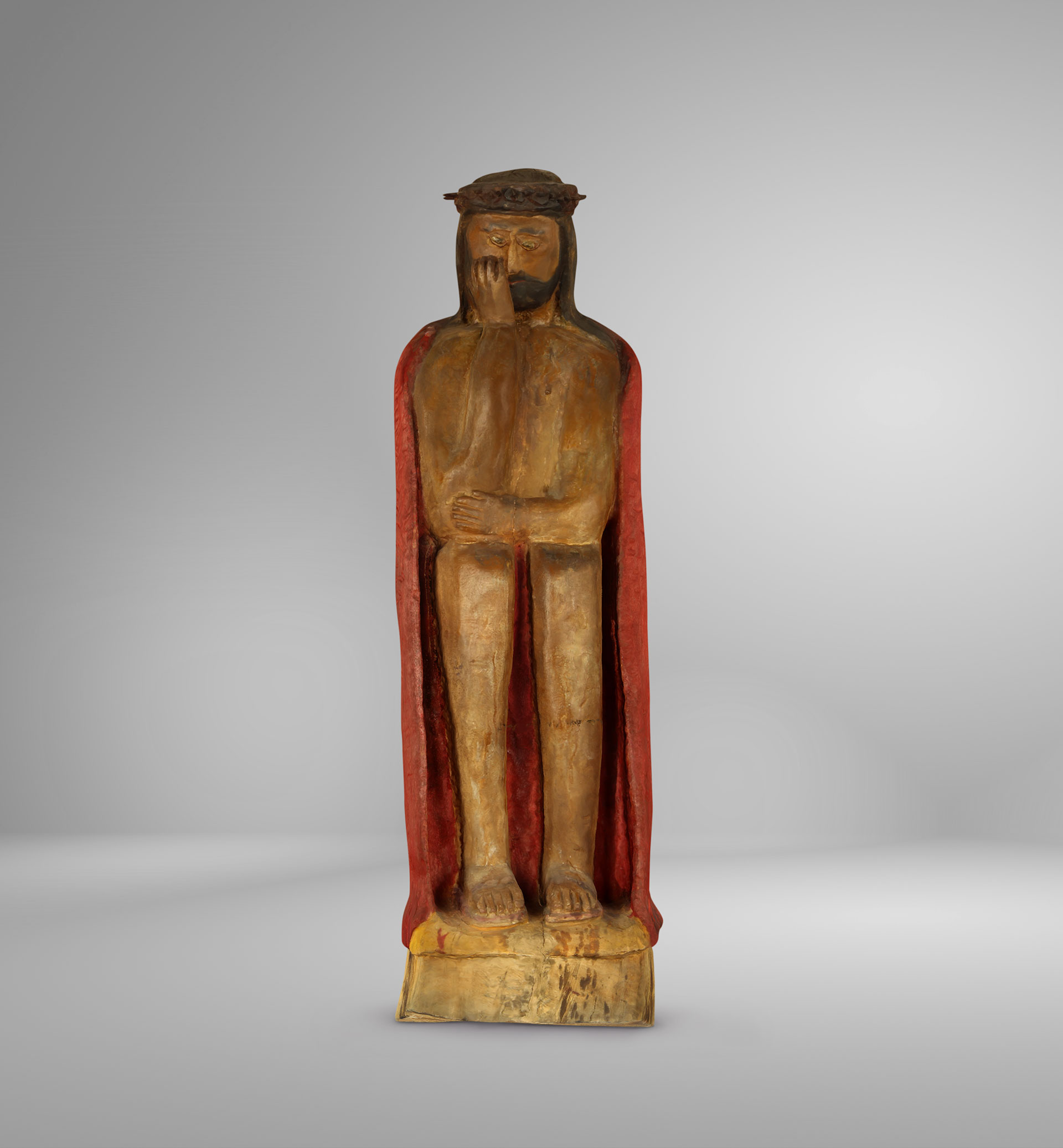Pensive Christ
And where have I led you? To one of those trite figurines adorning rural shrines. I could easily have selected some other exhibit of ennobling melancholy. But hang on, just a second! This very Polish roadside cookie-cutter “angel of melancholy” speaks volumes of our domestic sadness. Sorrow (Pol. frasunek) is a local phenomenon. The term is Polish, though it derives from the German verb fressen, “to gnaw” (as both “bite'' and “cause distress”); “sorrow” in English is related to the German noun Sorge. Unlike the Germans, Poles went ballistic with it. Now the language boasts the entire morphological gamut: along with frasunek (noun), there’s also frasować (verb), frasobliwy and frasowny (adjectives), meaning sorrowful, worried, in pain. Being sorrowful is being consumed with bottomless sadness: deep, earthly, rooted in reflecting on the human condition. The figure of the Pensive Christ (Chrystus frasobliwy), racked with sorrow and depicted in a traditional, meditative pose, his head resting on his hand, is the ultimate symbol of melancholy. An ideal of worry. Our Polish, Christian equivalent of Rodin’s The Thinker.

